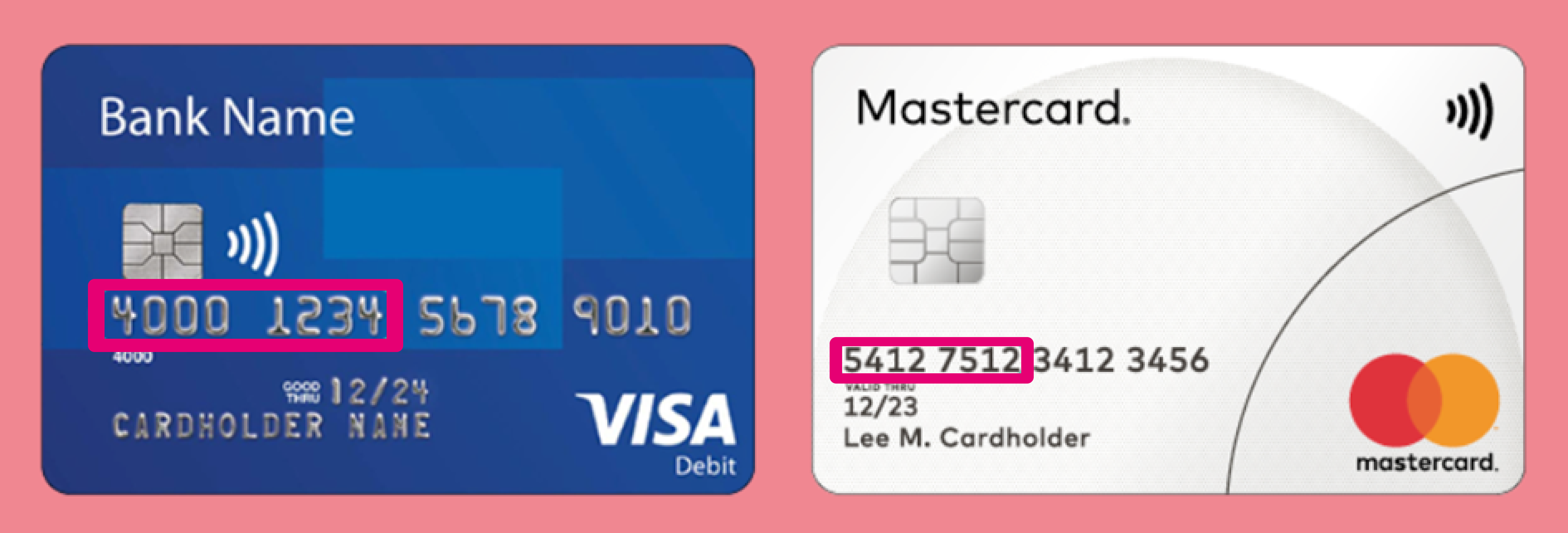Introduction of 8-digit BIN
Regulation change by Visa and Mastercard in April 2022
The card organisations Visa and Mastercard will extend the BIN (Bank Identification Number) of their cards from 6 to 8 digits globally on April 1st 2022. Among other things, the BIN is used by merchants and Payment Service Providers (PSPs) like us for routing transactions for authorisation, fraud prevention, loyalty programs or reporting. The change of the BIN-length is a regulation change. Whether you are in face-to-face business or e-commerce, as a merchant you need to be compliant next year.
The first 6 digits of the Primary Account Number (PAN) of credit, debit and prepaid cards are called Bank Identification Number (BIN). The BIN is generally used to identify the bank that issues the card. Issuing banks can have one or more - as is usually the case - issuing BINs, but each unique issuing BIN can only be licensed by one single issuing bank.
The massive growth of credit card issuers in recent years has led to a shortage of Bank Identification Numbers available. To have enough BINs available again, the International Organization for Standardization (ISO) set up ISO/IEC 7812-1 to lengthen the BIN-format from 6 to 8 digits. Visa and Mastercard are now implementing this standard.
Merchants need to be compliant with the new BIN-system at the deadline. If this is not the case, a significant loss in sales due to e. g. rejected cards might be the result - depending on the implementation.
Visa and Mastercard are implementing the new 8-digit standard from April 2022.
What will change for you?
For most merchants, this 8-digit extension will have no impact. For a small part of merchants, it could have an impact on their day-to-day operations if they have dedicated processing based on the BIN that they manage themselves: For example, this affects routing of transactions, fraud management and reporting.
However, you as a merchant need to be compliant with the new BIN-system at the deadline. If this is not the case, a significant loss in sales due to e.g. rejected cards might result – depending on the implementation.
What do you have to do?
As a Nexi Payengine merchant, no changes are expected on your end. It is our sole responsibility as your Payment Service Provider to make the necessary full impact assessment of the change on your organization and supporting applications; to help mitigate risks and adopt all changes.
But if you use 3rd party acquirers, 3rd party PSPs or Integrated Software Solutions for your payments, please contact your online Payment Service Provider or your terminal supplier. They will inform you, if you are 8-digit BIN-ready, or if adjustments need to be made.
Be aware, that the change concerns only Visa and Mastercard at the moment. All other major schemes like American Express, Diners Club/Discover etc. have not yet announced timetables for implementing the new 8-digit BIN, but it is expected to happen sooner or later.
Key facts at a glance:
- Generally speaking, if you are not using any rules or processes based on BIN or card number, no action is required from your side.
- If you have an e-commerce contract with Nexi Payengine and you are not sure what the impact for you might be, please make sure to contact your Payment Service Provider Customer Service department or, alternatively, your Key Account Manager.
- On the contrary, if you have access to the card number or if you apply specific rules based on BINs, you should check if these rules are still working with the new 8-digit system

Q&A 8-digit BIN
What is the Bank Identification Number (BIN)?
The Bank Identification Numbers (BIN) uniquely identifies networks, issuers and holds other information. Currently the BIN corresponds to the 6 first digits of the card number.
Because of the increasing demand of BIN by issuers, in April 2022 the length of the BIN will be extended from 6 to 8 digits, without a change of the general length of the card number/PAN - Primary Account Number (e. g. 16 and 19 digits for Visa cards in Europe).
What is changing?
For Visa and Mastercard, in April 2022 the length of the BIN will be extended from 6 to 8 digits.
By this time, Visa and Mastercard will reallocate the BINs between issuers step by step. Some will keep their complete 6-digits BIN extended to 8 digits, while others will get a slightly or completely new BIN.
What will not change?
- The general card number length will remain the same
- The PCI rules will not change. Receipt requirements remain unchanged
- No new cards will need to be issued
What can be the consequences?
The use of the old 6-digit BIN could have negative consequences for merchants doing processing on BINs.
The BIN can be used for:
- BIN blocking, fraud scoring, fraud prevention
- Reporting and dispute resolution to help identify transactions
- Loyalty programs
Actions to be taken by you as a merchant?
- If you have processing tasks based on BINs using a third-party PSP or Integrated Software Solutions not from direct.Brandname we recommend that you check their compatibility with the new 8-digit format.
- If you have an e-commerce contract with Nexi Payengine, we have taken all necessary steps to make you compliant. This is an automated process and you do not need to take any action on your side.
What is the influence on PCI DSS (Payment Card Industry Data Security Standard)?
The generic PCI regulations are not expected to change with the introduction of the 8-digit BIN.
Further questions?
For further questions regarding BIN customisation in relation to your payment solution Nexi Payengine, please contact our customer service team.